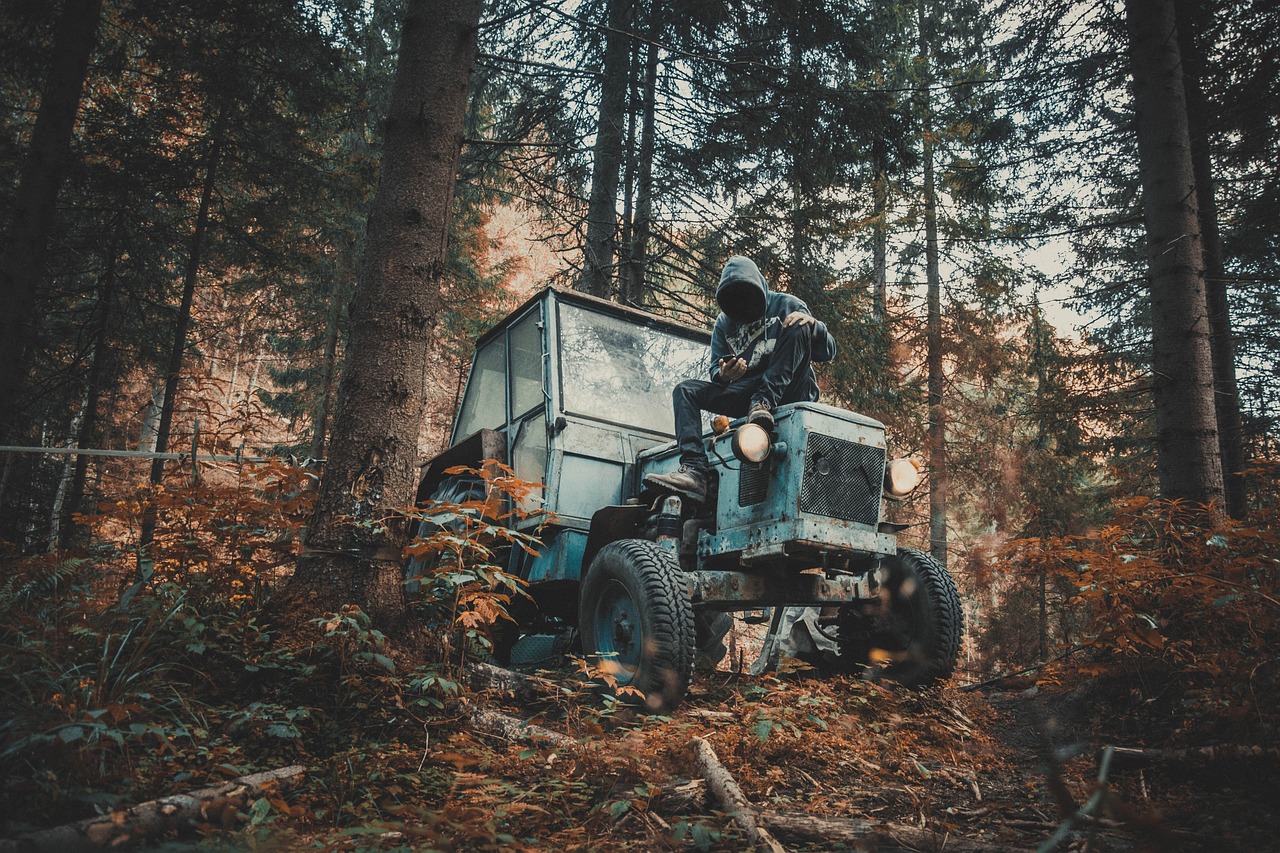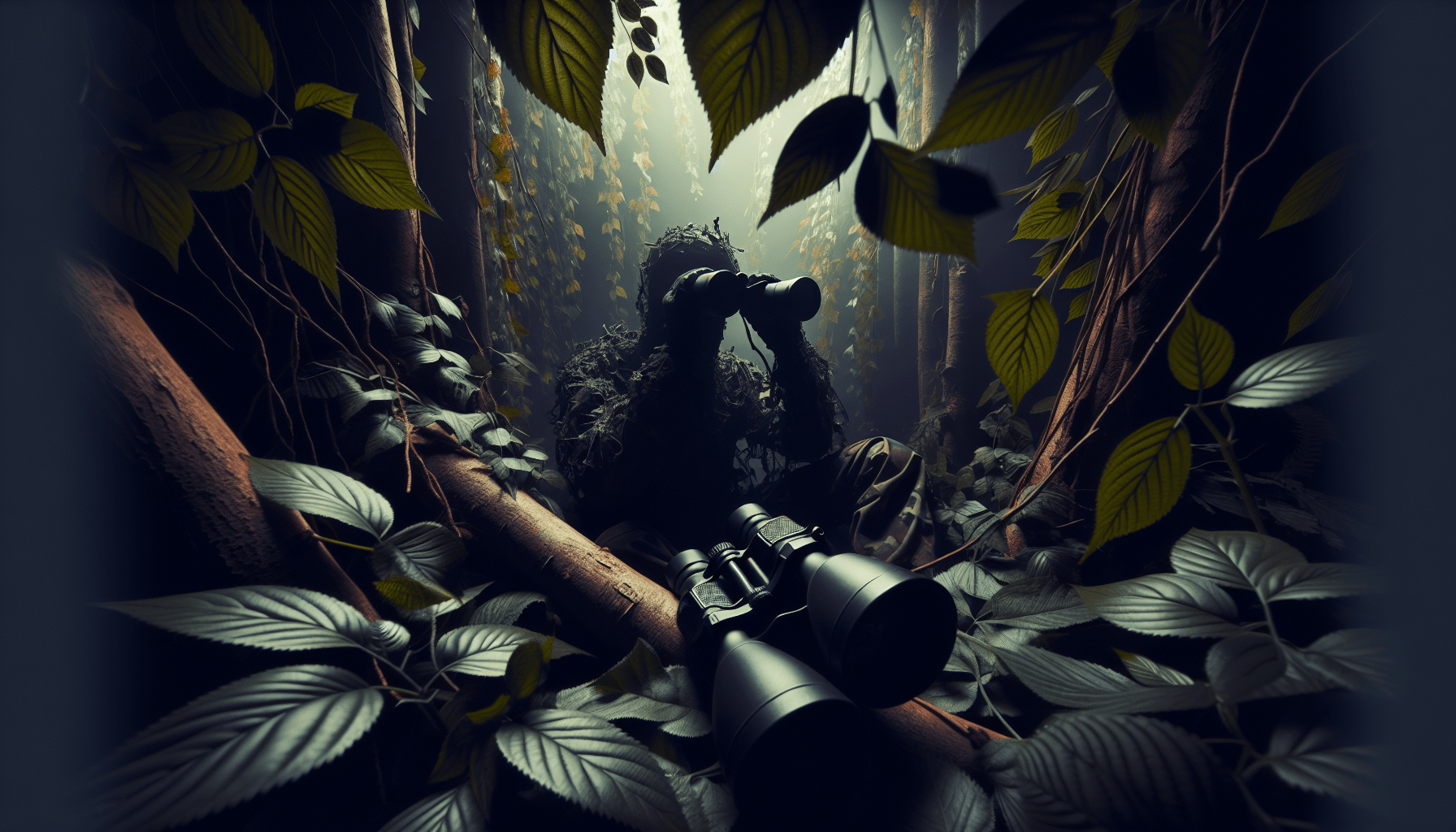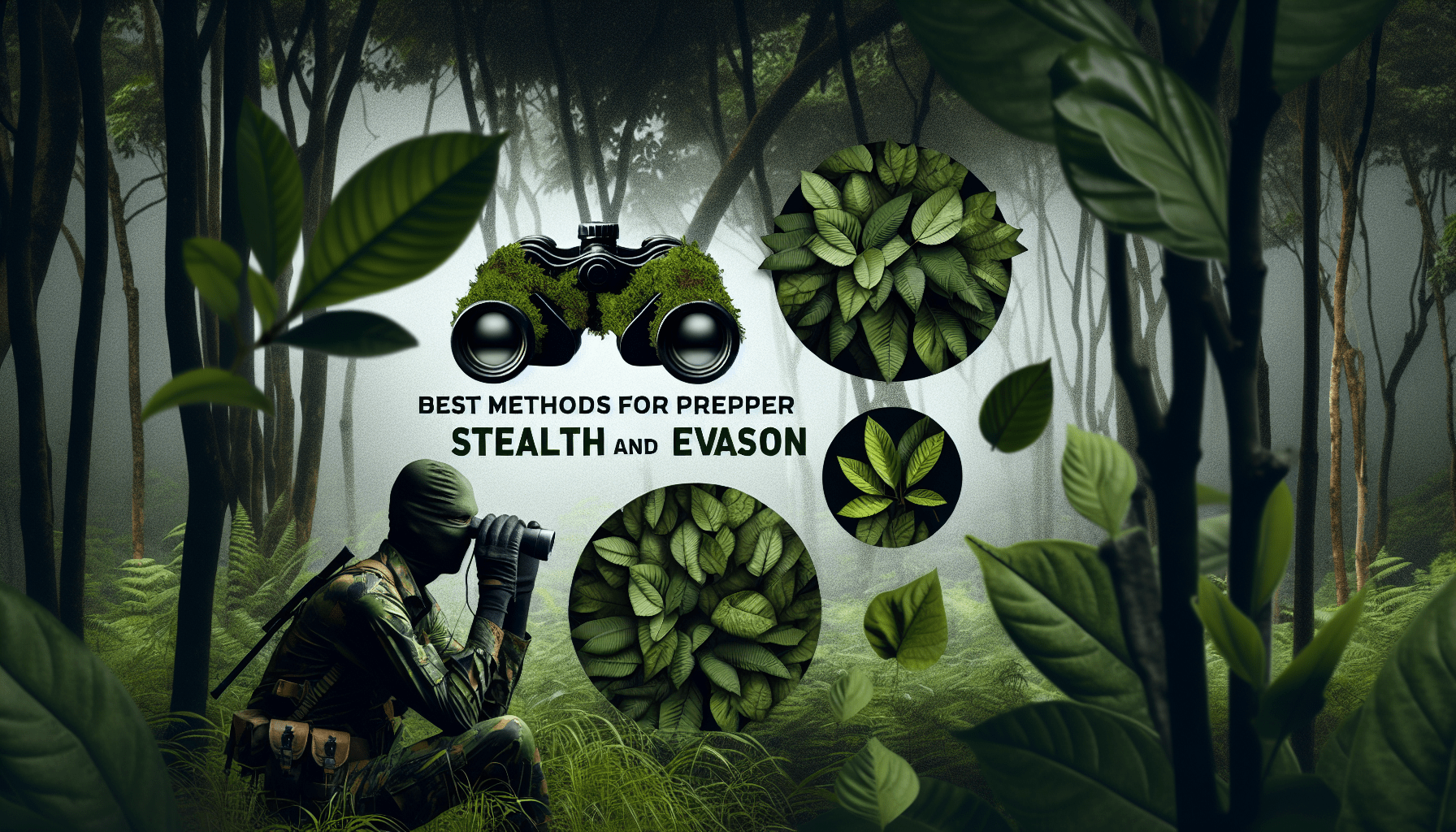You’re about to discover the most effective techniques for maintaining a low profile and evading potential threats in survival situations. In this article, we will explore the best methods for prepper stealth and evasion, giving you the knowledge and skills to navigate dangerous environments undetected. Whether you’re preparing for a natural disaster or envisioning a post-apocalyptic world, these strategies will empower you to blend in seamlessly and keep yourself and your loved ones safe. Get ready to unlock the secrets of prepper stealth and evasion.

Camouflage Techniques
Use natural surroundings for cover
When it comes to blending in with your environment, the best place to start is by using the natural surroundings for cover. Take a close look at your surroundings and identify any elements that can provide you with concealment. This could be dense vegetation, trees, or rocks. By positioning yourself strategically behind these natural barriers, you can effectively hide yourself from prying eyes.
Blend in with your environment
Camouflage clothing and gear are essential for blending in with your environment. Investing in clothing that matches the colors and patterns of your surroundings can greatly enhance your stealth capabilities. Opt for earthy tones and subtle patterns that mimic the natural surroundings. Additionally, consider using camouflage face paint or a ghillie suit to further break up your silhouette and blend seamlessly into your surroundings.
Use camouflage clothing and gear
In addition to blending in with your environment, utilizing camouflage clothing and gear can greatly enhance your stealth and evasion tactics. Look for clothing and gear that is specifically designed for camouflage purposes. This could include ghillie suits, face masks, gloves, and even backpack covers. By carefully selecting camouflage gear that matches your environment, you can effectively disappear into the shadows and remain undetected.
Silent Movement
Practice walking silently
Silent movement is a crucial skill for any prepper aiming to achieve stealth and evasion. Practice walking silently by carefully placing each footstep, rolling from heel to toe. Avoid stepping on branches or dry leaves, as they can produce noise that may give away your position. By mastering the art of silent walking, you can move undetected and avoid alerting potential threats to your presence.
Learn to crouch and crawl quietly
In addition to silent walking, learning to crouch and crawl quietly can be invaluable in certain situations. When you need to move closer to your target or navigate through tight spaces, being able to move silently while in a low position can greatly increase your stealth capabilities. Practice keeping your movements smooth and controlled. Avoid dragging any gear or equipment that may produce noise.
Use stealthy hand signals
Communication is key, even in situations that require stealth and evasion. Instead of using verbal communication that could potentially reveal your location, learn and utilize stealthy hand signals. This allows you to convey messages to your team or fellow preppers without speaking a word. Make sure to practice these signals beforehand to ensure effective and efficient communication during critical moments.

Evasion Tactics
Create diversions to draw attention away
When the need arises to divert attention from your location or objectives, creating distractions can be a useful tactic. This can be done through various means, such as setting off firecrackers or smoke bombs in a different area, playing recordings of loud noises, or triggering alarms. By drawing attention away from your intended path or area, you can increase your chances of successfully evading detection.
Use cover and concealment effectively
Cover and concealment are vital elements of effective evasion tactics. Cover refers to physical barriers that provide protection, such as walls, trees, or vehicles. Concealment, on the other hand, refers to anything that helps hide you from sight, such as bushes or shadows. Learning to effectively use both cover and concealment can greatly enhance your ability to evade detection and stay hidden from potential threats.
Master the art of tracking
In order to successfully evade potential pursuers, mastering the art of tracking can be essential. By understanding how tracking works, you can anticipate the methods and techniques others may use to track you. Additionally, learning to disguise or erase your own tracks can help throw off anyone who is trying to follow your trail. Practice analyzing tracks, footprints, and other signs of movement to gain insight into the tracking skills of others.
Escape and Evade
Plan multiple escape routes
When it comes to escape and evasion, having multiple pre-planned escape routes is crucial. Always have a backup plan in case your primary route is compromised or blocked. Familiarize yourself with the terrain and identify potential alternate routes that can lead you to safety. By having multiple escape routes memorized and ready to execute, you can significantly increase your chances of successfully evading capture.
Use hidden caches
Hidden caches are strategic locations where you can store essential supplies, gear, and resources. These caches can serve as emergency supplies, allowing you to resupply and stay hidden for extended periods of time. Ensure your caches are well hidden and secure, taking into consideration factors such as weather, accessibility, and potential discovery by others. Having hidden caches along your escape routes can be a game-changer during critical moments.
Utilize escape and evasion tools
Equipping yourself with the right tools can significantly enhance your ability to escape and evade. Some essential escape and evasion tools to consider include lock picking kits, navigation devices, fire starters, signaling devices, and tools for shelter building. These tools can help you overcome obstacles, navigate unknown territories, and increase your chances of survival in hostile environments. Familiarize yourself with the proper use of these tools and carry them with you at all times.

Urban Stealth
Blend in with crowds
In urban environments, blending in with crowds is key to maintaining stealth and evading potential threats. Dressing in clothing that matches the style and fashion of the local population can help you blend seamlessly into the crowd. Avoid wearing anything that may make you stand out or draw attention to yourself. Additionally, adopt the mannerisms and behavior patterns of those around you to avoid appearing suspicious or out of place.
Avoid surveillance cameras
With the increase in surveillance cameras in urban areas, avoiding their detection is crucial for maintaining your stealth and privacy. Be aware of your surroundings and take note of any surveillance cameras in your vicinity. Plan your routes to avoid them whenever possible or take alternative paths that may offer less surveillance coverage. Should you need to pass by a camera, consider wearing accessories that can block your face or using techniques such as strategic positioning or timed movements to avoid detection.
Utilize urban cover and concealment techniques
In urban settings, cover and concealment can take different forms compared to natural environments. Look for objects such as trash cans, parked vehicles, or construction sites that can provide cover or concealment. Utilize alleyways, doorways, or corners to hide yourself from view. By understanding the urban landscape and utilizing the available cover and concealment, you can effectively navigate through urban environments without drawing unwanted attention.
Digital Privacy
Use secure communication methods
In today’s digital age, protecting your privacy online is crucial. Use secure communication methods, such as encrypted messaging apps or virtual private networks (VPNs), to ensure your conversations and personal information remain secure. Avoid sharing sensitive information on public platforms and be cautious about the websites you visit. By prioritizing digital privacy, you can minimize the risk of your online activities being traced or monitored.
Protect your online footprint
Your online presence can reveal a lot of information about you, which can potentially be used against you. Take steps to protect your online footprint by being mindful of what you share and how much personal information you disclose. Regularly review your social media profiles and remove any unnecessary personal details. Consider using pseudonyms or aliases when creating accounts online, further disguising your true identity and making it harder for others to track you.
Ensure digital anonymity
Maintaining digital anonymity is essential for preppers concerned about their privacy and security. Consider using anonymous web browsing tools, such as Tor, to browse the internet without revealing your true identity. Learn about anonymizing techniques and take necessary steps to protect your digital identity. By ensuring digital anonymity, you can reduce the risk of being targeted or tracked by malicious individuals or organizations.

Countertracking
Cover your tracks effectively
When trying to evade pursuit, covering your tracks effectively is crucial. Avoid leaving obvious footprints or trails that may lead others to your location. Learn techniques for erasing footprints, such as brushing away loose soil or using natural materials to cover your tracks. Additionally, be mindful of any items or belongings you may leave behind that could be used to identify you. The more thorough you are in covering your tracks, the harder it will be for others to follow your trail.
Avoid leaving traces of your presence
In addition to covering your tracks, it is important to avoid leaving any other traces of your presence. Be cautious about touching surfaces or objects that can retain your fingerprints. Minimize the use of items that may leave behind DNA evidence, such as discarded water bottles or food wrappers. By being mindful of your actions and surroundings, you can reduce the chances of leaving behind any incriminating evidence that could be used against you.
Use decoy tactics
Decoy tactics can be effective in diverting attention away from your true location or intentions. Consider leaving false clues or trails that mislead potential pursuers. This could involve leaving behind deliberately misleading footprints, creating false tracks leading in the opposite direction, or strategically placing decoy objects to confuse trackers. By employing decoy tactics, you can potentially buy yourself valuable time and increase your chances of successfully evading capture.
Personal Risk Assessment
Identify potential threats
Conducting a thorough personal risk assessment is essential for effective planning and preparation. Identify potential threats that you may face in your specific environment or situation. This could include natural disasters, civil unrest, or encounters with hostile individuals. By understanding the potential risks, you can better prepare and take necessary measures to mitigate these threats.
Assess your personal vulnerabilities
Take the time to assess your personal vulnerabilities and weaknesses. Understand your physical limitations, health conditions, or any skills or knowledge gaps that may pose challenges during evasion or survival situations. By acknowledging your vulnerabilities, you can work on strengthening those areas through training, acquiring new skills, or seeking necessary medical attention. This self-awareness will help you better prepare for worst-case scenarios.
Plan and prepare for worst-case scenarios
Once you have identified potential threats and assessed your vulnerabilities, it is important to plan and prepare for worst-case scenarios. Develop contingency plans for different scenarios and practice them regularly. Stockpile essential supplies, such as food, water, and medical kits, that can sustain you during extended periods of evasion or survival situations. Create communication plans with trusted allies or family members to ensure you can maintain contact in emergency situations. By being proactive in your planning and preparation, you increase your chances of successfully navigating through challenging circumstances.

Survival Mindset
Stay calm under pressure
Maintaining a calm and composed mindset is crucial in survival situations. Panicking or letting fear take over can cloud your judgment and hinder your ability to think clearly. Practice stress management techniques and develop mental resilience. Train yourself to stay calm under pressure through realistic scenario-based training. By staying calm and focused, you can make better decisions and respond effectively to challenging situations.
Think and act strategically
A key aspect of survival is the ability to think and act strategically. Assess situations, anticipate potential outcomes, and formulate plans of action. Consider both short-term and long-term strategies that align with your objectives. Act decisively but thoughtfully when executing your plans. By thinking and acting strategically, you can maximize your chances of success and overcome obstacles more effectively.
Master psychological warfare
Psychological warfare can be a powerful tool in survival situations. Understand human emotions and how they can be manipulated or influenced. Use your knowledge of human psychology to your advantage, whether it’s in negotiating, distracting or even intimidating potential threats. By mastering psychological warfare, you can gain the upper hand, create advantages for yourself, and increase your chances of survival.
Physical Conditioning
Maintain good physical fitness
Maintaining good physical fitness is essential for prepper stealth and evasion. Regular exercise, including cardiovascular workouts, strength training, and flexibility exercises, can improve your overall physical fitness levels. A strong and healthy body can endure prolonged evasion efforts, navigate challenging terrains, and withstand physical exertion. Prioritize physical fitness and incorporate regular exercise routines into your daily life.
Develop stamina and endurance
In addition to general physical fitness, it is important to develop stamina and endurance. Endurance training, such as long-distance running or hiking, can increase your stamina levels, allowing you to keep going for extended periods without tiring easily. Incorporate endurance-building exercises into your routine and gradually increase the intensity and duration of your workouts. This will help prepare you for the physical demands of evasion and survival situations.
Train for agility and speed
Agility and speed are crucial in stealth and evasion situations. Incorporate exercises that focus on improving your agility, such as ladder drills, obstacle courses, or agility ladder workouts. Additionally, consider incorporating speed training exercises, such as sprints or interval training, to improve your quickness and reaction time. By training for agility and speed, you can enhance your ability to move swiftly and efficiently, outmaneuvering potential threats and increasing your chances of successful evasion.
In conclusion, mastering stealth and evasion techniques is essential for any prepper looking to navigate through potentially dangerous or hostile situations. By utilizing camouflage, practicing silent movement, employing evasion tactics, planning for escape, and adopting urban stealth techniques, you can enhance your ability to remain undetected and avoid potential threats. Additionally, prioritizing digital privacy, countertracking skills, personal risk assessment, and adopting a survival mindset can further increase your chances of successfully evading capture and ensuring your safety. Lastly, maintaining physical conditioning through regular exercise and training for agility and speed will provide you with the physical capability to endure and navigate through challenging situations. Remember, preparation, practice, and a friendly disposition will be your greatest assets in mastering prepper stealth and evasion techniques.
